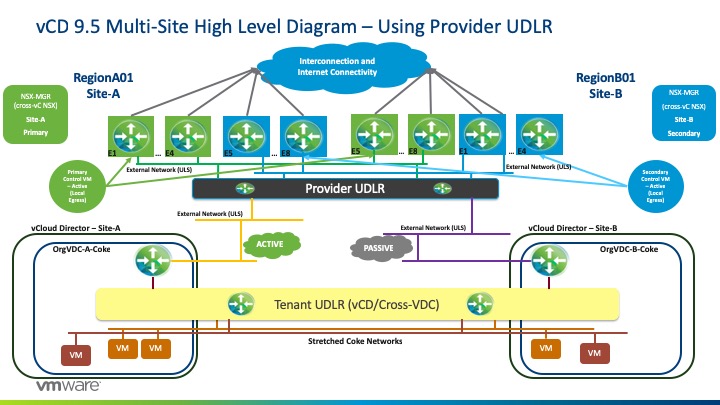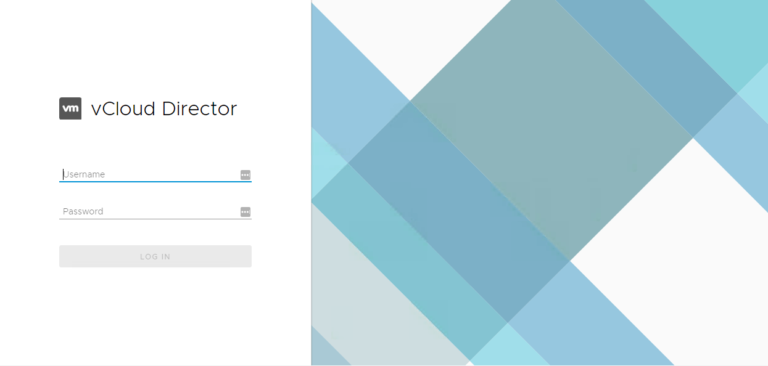Cloud-sprawl is a growing problem
Contents
If you’re an enterprise IT lead, it’s likely that cloud-sprawl is on your mind. Per latest research, a majority of enterprises have deployed IT technologies that span, on average, more than 4 cloud vendors. Driven by the Enterprise’s growing application needs, different cloud vendors bring their own specialty to the table.
At VMware, we get to see our customers’ use-cases across the spectrum: big-data on GPU, mission-critical on private cloud, test/dev on containers and functions, and much more. But the same customers face challenges in maintaining application continuity, compliance, and security across these cloud endpoints. The idea of cloud was to deliver IT at more than the speed of business; today cloud silos are getting in the way of production.
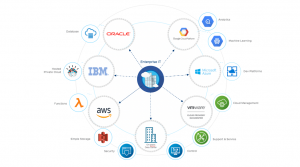
In some ways, this is reminiscent to the compute-storage-network datacenter silo that we are familiar with. Virtualization and convergence across the datacenter stack helped overcome these silos, but what do devops professionals or cloud admins do when entire clouds refuse to operate seamlessly with each other?
Should I go with a single vendor?
A lot of technology vendors have come up with single-pane-of-glass-cross-cloud-platform-that-solves-all-your-problems, but these don’t possess the purview of the entire infrastructure and application stack across cloud platforms. Take security, for example. Threats can come from anywhere – on un-encrypted storage, through your firewall, injected into your application, on your managed endpoints and much more. It isn’t in the scope of a single cloud management platform to be aware of, and proactively detect and rectify all the above. Nor is it reasonable to expect an SMB IT team to monitor and respond to all these threats.
What does one do? One could choose to use a single cloud vendor, but that entails risk of overcommitting. One would be exposed to the risk of ballooning costs, upgrades and downtimes, and a limited set of technologies. What if their support falls short? What if they are not compliant in a new geography that you’re expanding to? What you would like to have is a multi-cloud environment that works and grows seamlessly, with predictability in performance and control in costs.

The New Managed Cloud Provider
The inherent complexity of multi-cloud has given rise to a new wave of Managed Cloud Providers. These aren’t your average infrastructure hosting companies – they are enterprise IT teams’ partners in a multi-cloud world and have representation from every part of the cloud / datacenter technology ecosystem – comprising of Managed Service Providers, Cloud Service Providers, Telco’s, Systems Integrators, Systems Outsources, Hyper-scale cloud resellers, Professional Service vendors and more.
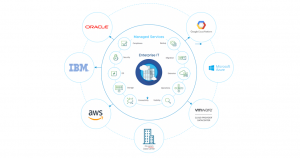
Most companies of note in these segments are broadening their practices to offer multi-cloud managed services. We at VMware are proud to have one of the world’s largest ecosystems of multi-cloud management companies – members of the VMware Cloud Provider Program, powered by the VMware Cloud Provider Platform. The community features cloud providers large and small, with portfolio-breadth and technical depth, spread across over a hundred countries with millions of VMs under management. They routinely feature in industry awards and publications, often for saving their customers (enterprise IT teams) millions of dollars in cloud operations costs. Together, they form a rich marketplace of cloud services that help IT teams move from deploying silo’d infrastructure to consuming multi-cloud as a service.
More than a Single Pane of Glass
If you follow VMware’s earnings calls, you may have noticed that the Cloud Provider business is one of the fastest-growing (yet, one of the largest) segments in the company. This is because our customers want to stop cloud-sprawl, and are calling on our cloud provider partners to move them to a multi-cloud consumption model. No IT team today wants to back up 2 tiers of data with 3 different cloud vendors across 10 geographies resulting in 3 separate bills requiring dozens of approvals. Instead, some are heading to their nearest VMware Cloud Provider – explaining their requirements, setting a budget, and holding their providers to their SLA’s. CIO’s are telling us that they are beginning to experience IT operations like they have always wanted it.
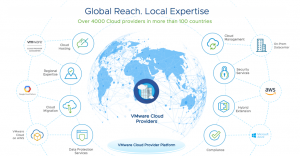
Efficient Operations, Lower Costs, More Transparency
The implications are enormous. Rapid test/dev, seamless recovery, improved release-efficiency, reduced staff-downtime, multi-cloud security, and best-in-class support are just a few of the plethora of technical advantages of moving to a VMware Cloud Provider. And let’s not forget the lower cloud costs, smaller on-prem footprint and assets (lower capex), agile geographical expansion, and easier transition to new lines of business that moving to a VMware Cloud Provider will bring you. And all of this is available to you on a single bill, with single Terms of Service, and a central point of subscription and usage.
Plethora of Services
What are some example offerings from our cloud provider partners?
- Disaster Recovery: Choice in backup vendors, choice in RPO/RTO, and turnkey application protection, at 99.99% uptime. Powered by the VMware Cloud Provider Platform, our Cloud Provider partners (Sungard, iLand, Expedient, and others) regularly feature in the Gartner MQ for DRaaS, an apt recognition for providing their customers improved staff productivity and peace of mind
- Cross-Cloud costing: Partners such as Rackspace and Accenture have enormous cloud practices, and as a result possess proven analytics on application-placement for the most cost-optimized configuration for their customers’ cloud environments. They also use multi-tenancy and scale constructs to deliver cost-savings for applications that one may not be able to generate as a cloud admin of a small / medium IT team
- Security: The Cloud Provider Platform has pervasive security built right into it – from the hypervisor to applications, across the network, all the way to devices and endpoints. Our cloud provider partners understand that security is among the top cloud inhibitors in the industry, and possess cybersecurity expertise across clouds, application architectures, AZs, and threats. Partners such as NTT, CenturyLink, Fujitsu and more have been featured on publications such as Forrester Wave and Gartner MQ on Managed Cloud Security
- Compliance: Over half the enterprises in the world are still GDPR non-compliant and fewer than a third have concrete plans to get there. There is a clear expertise-gap that VMware Cloud Provider partners can fill. Cloud Providers understand – and have say in – regional and vertical policies, and continually refine and review their cloud practices for compliance. Cloud Providers can identify and remediate out-of-compliance environments in quick time, and provide continual compliance as businesses expand. In fact, VMware Cloud Provider partners can help in any or all of the stages of compliance planning: Education > Consultancy > Framework Development > Implementation > Lifecycle Management.
However, the above are just highlights. VMware Cloud Providers deliver turnkey cloud management, connectivity, data services, resource planning, content and intelligence management, and much more. Our Cloud Provider ecosystem is growing, and network effects are creating platform gravity that is attracting more ISVs, more developers and more workloads.
Under the Hood – VMware Cloud Provider Platform
The engine powering these best-in-class cloud practices of our partners is the VMware Cloud Provider Platform (CPP). The CPP is a 2-sided platform that helps Cloud Providers provision, operate and manage cloud resources, and enterprises interact with the platform to consume turnkey cross-cloud services. The platform has inherent service-delivery capability with Data Protection, Migration, Security, and more built right into it, enabling our cloud provider partners get to service delivery on Day 1. As a result, enterprise IT teams can expand or migrate easily. The platform comprises core VMware technologies – vSphere, NSX, vSAN, vCloud Director, and VMware Cloud on AWS, to name a few, and creates a cloud fabric that stretches across variegated cloud endpoints all the way to the edge and devices. It is open, extensible, automated, and allows for the provisioning and consumption of cloud infrastructure and services almost anywhere in the world.
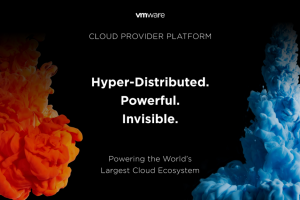
I will write a blog describing the Cloud Provider Platform’s innate capabilities soon, as they are well beyond the scope of this article. For now, I will close by saying that VMware Cloud Providers are far, far more than vSphere hosting / IaaS companies. They have evolved with us to become multi-cloud service providers and are enjoying some of the industry’s highest growth. The TL;DR for this 1400-word blog is this: the next time you are contemplating deploying new infrastructure, consider consuming cloud as a service from a VMware Cloud Provider near you.
Find out how the best of VMware technologies and our Cloud Provider Program come together to create a cloud solution that suits your needs. Get the webinar here.
Find a VMware Cloud Provider: https://cloud.vmware.com/providers
See the latest Cloud Provider Technologies from VMware: https://cloudsolutions.vmware.com/
Let’s Connect!: https://twitter.com/cloudhappens



